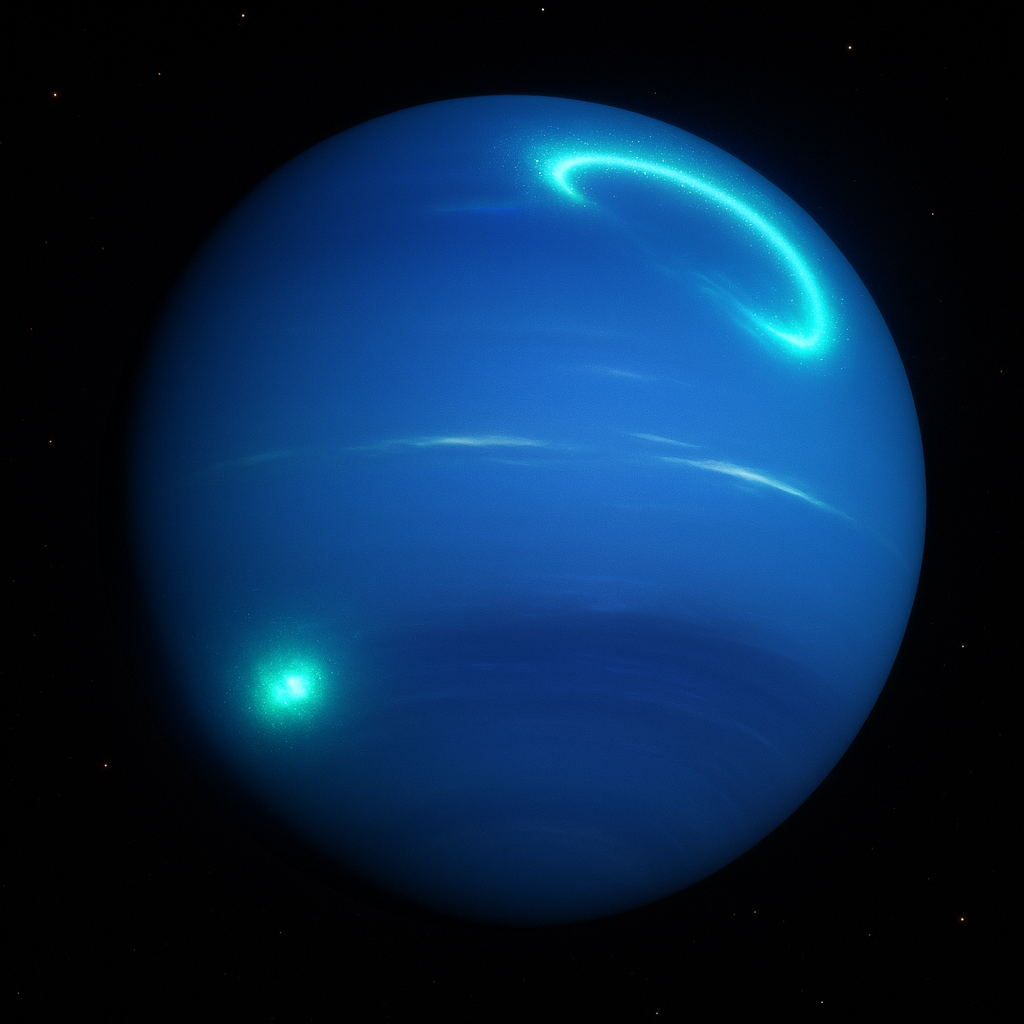In a groundbreaking astronomical discovery, NASA’s James Webb Space Telescope (JWST) has captured the first-ever direct evidence of auroras on Neptune. This revelation not only adds a thrilling chapter to our understanding of the distant ice giant but also provides crucial insights into the planet’s elusive magnetic field and atmospheric dynamics. As JWST continues to extend the frontiers of space exploration, this latest finding showcases its unparalleled capacity to unravel mysteries that have eluded astronomers for decades.
Contents
Auroras: A Celestial Light Show
Auroras are radiant displays that occur when charged solar particles interact with a planet’s magnetic field and atmosphere. On Earth, we recognize them as the northern and southern lights, predominantly seen near polar regions. The mechanism behind this dazzling phenomenon involves solar wind particles becoming trapped in a planet’s magnetosphere, where they are funneled toward the magnetic poles and collide with atmospheric molecules, emitting light in the process.
However, not all auroras are alike. On gas and ice giants such as Jupiter and Saturn, auroras manifest under different magnetic field configurations and atmospheric compositions. Neptune, being over 30 times farther from the Sun than Earth, presents unique challenges for auroral detection, including limited sunlight and extreme atmospheric conditions.
What Makes Neptune’s Auroras Unique?
The auroras detected on Neptune differ fundamentally from those observed on Earth or other gas giants. Rather than appearing near the poles, Neptune’s auroras are found in mid-latitude regions. This anomaly stems from Neptune’s highly tilted magnetic field, which is offset by about 47 degrees from its rotational axis and significantly displaced from the planet’s core.

This off-kilter magnetic field causes auroral activity to occur in locations far removed from what would typically be considered polar zones. The JWST’s Near-Infrared Spectrograph (NIRSpec) was instrumental in making this detection. By observing emissions of the trihydrogen cation (H3+), a known marker of auroral activity on giant planets, scientists confirmed the presence of auroras on Neptune during a June 2023 observation campaign.
Why Haven’t We Seen Them Before?
One of the main reasons Neptune’s auroras have remained undetected until now is the significant cooling of its upper atmosphere over the past few decades. Since Voyager 2’s flyby in 1989, Neptune’s thermosphere has cooled by several hundred degrees Kelvin. This drop in temperature likely resulted in fainter auroral emissions, rendering them invisible to earlier, less sensitive instruments.
The James Webb Space Telescope, with its exceptional infrared capabilities, has overcome this barrier. Its advanced instrumentation allows for high-resolution spectral analysis, revealing subtle atmospheric features that were previously beyond our observational reach.
Scientific Significance and Future Implications
The discovery of Neptune’s auroras opens new avenues for understanding not just Neptune, but planetary magnetospheres in general. Studying these phenomena over an extended period—ideally over a full 11-year solar cycle—could illuminate the mechanisms behind Neptune’s peculiar magnetic field, atmospheric chemistry, and energy dynamics.
Additionally, auroras serve as natural probes for studying the interaction between a planet and the solar wind. On Neptune, these interactions could offer analogs for distant exoplanets with similarly complex magnetic environments, helping refine our models of planetary habitability and magnetospheric protection.
Conclusion
NASA’s James Webb Space Telescope continues to astonish with its ability to explore the farthest reaches of our solar system and beyond. The detection of auroras on Neptune not only marks a milestone in planetary science but also underscores the transformative power of modern astronomical instrumentation. As scientists delve deeper into the mysteries of Neptune’s magnetic field and atmospheric behavior, this discovery will undoubtedly serve as a cornerstone for future research in planetary magnetism and atmospheric physics.
Stay tuned to Prowell-Tech.com for more cutting-edge updates in science, technology, and space exploration.

